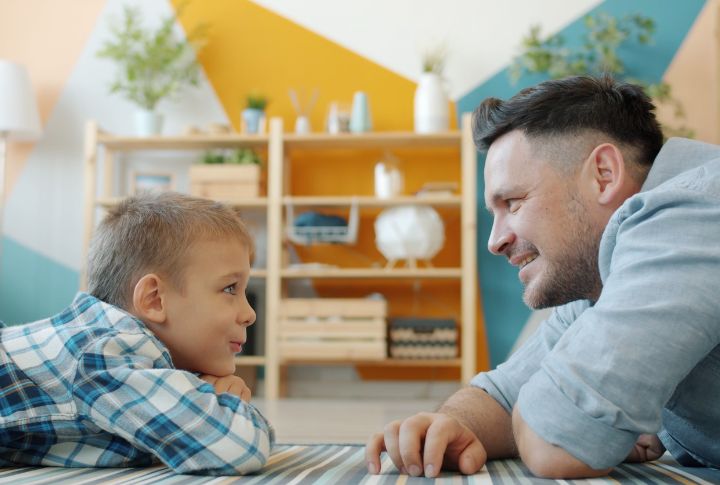
Kids have a funny way of tuning out directions while instantly locking in on anything fun. It’s not defiance—it’s their way of learning limits and choosing what matters. Yelling rarely works, and repeating yourself only adds stress. However, you can still get kids to listen with calmer, smarter communication. Find out why a mix of consistency and creativity works far better than yelling ever could.
Get Down To Their Level Before You Speak

Think about it: standing tall makes you look like a giant boss! Dropping down to their eye level immediately changes the dynamic. You become less of a looming authority and more of a friendly equal. That simple physical connection guarantees their focus and makes them genuinely ready to process your words.
Use Playful Language To Make Requests Feel Fun

The hundredth demand to “clean up” just creates resistance. Why not make it silly? Wrapping commands in a funny voice or turning tasks into a Secret Agent Quest takes the power struggle away. Humor is a fantastic tool; it makes frustrating obligations feel like quick, shared entertainment instead.
Offer Two Choices That Lead To The Same Goal

A child pushing back is usually just seeking control. Easy choices framed clearly, such as “Do you want the blue socks or the green socks?” give them that feeling. They feel respected because they made a decision. Cooperation improves dramatically when they feel they have a say in their everyday life.
Turn Listening Practice Into A Game You Play Together

Getting their ears to tune in feels less like a chore if you call it a game. Playing classic Simon Says or having them invent silly rules transforms the skill. Suddenly, what looks like play is actually focused practice. They build attentiveness naturally because they’re having fun.
Use Visual Charts To Track Tasks And Wins

A colorful chart is far more compelling than a verbal reminder. Kids light up as responsibilities become playful charts with stickers, giving them motivation to succeed daily. Visible records of their achievements help in staying attentive and motivated throughout the day. The system allows for managing tasks independently.
Build A Secret Signal For When You Need Their Attention

Shouting across the room is exhausting and ineffective. A private, non-verbal signal—like a quick hand gesture—is engaging and immediate. This shared code bypasses the noise and adds a fun, conspiratorial element. In this way, communication improves without ever needing to raise your voice.
Praise Listening Moments Right After They Happen

There’s power in an immediate reaction. The moment they successfully follow an instruction, an enthusiastic high-five or an instant verbal cheer seals the deal. That quick, positive feedback acts like fuel. It reinforces their listening skills instantly, making them eager to tune in next time.
Do A Daily Check-In Where You Both Share Feelings

A dedicated time to talk about the day’s events—what was fun, what was frustrating—builds huge trust. These short check-ins make children feel deeply seen and understood. Cooperation always flows more easily when a child feels heard and emotionally connected to their parent.
Use Calm Repetition Instead Of Raising Your Voice

Calm directions, with a steady voice, help children follow through without tension or confusion. It’s a peaceful approach that gives them space to process the information without pressure. It also helps them focus and nurture their ability to understand directions.
Model Listening By Giving Them Your Full Attention First

The most effective listeners are often those who’ve been listened to. Putting down your distraction and truly focusing on their conversation sets the standard. Your respectful behavior becomes a powerful mirror. Children naturally start to reflect that same focused attention back to you.

